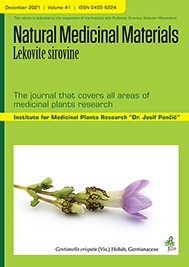Biomedicinal Research Centre, Forestry Research Institute of Nigeria , Oyo State , Nigeria
Biomedicinal Research Centre, Forestry Research Institute of Nigeria , Oyo State , Nigeria
Montane Forest Research Station, Forestry Research Institute of Nigeria , Palateau State , Nigeria
Montane Forest Research Station, Forestry Research Institute of Nigeria , Plateau State , Nigeria
Biomedicinal Research Centre, Forestry Research Institute of Nigeria , Oyo State , Nigeria
This study investigated solvent effects on the phytochemical composition of Quassia undulata leaves a medicinal plant used in treating arrays of diseases including fever and cough. The leaves were collected, washed, air-dried, pulverized and evaluated for some inherent phytochemicals using four different solvent systems based on their polarities. The solvents are methanol, acetone, ethyl acetate and chloroform. The methanol extract was found to have the highest number of secondary metabolites (saponins, tannins, flavonoids, steroids, coumarins, anthraquinones, alkaloids and phenols). None of the extracts tested positive for the presence of phlobatannins, terpenoids and emodins. The methanol extract was further analyzed quantitatively for some of the determined phytochemicals. Tannins had a concentration of 3.131 mg of catechin equivalents per 100 mg sample (mg CE/100g), alkaloids - 5.200 %, total phenolics - 11.828 mg of gallic acid equivalents per gram of extract (mg GAE/g), flavonoids - 8.074 mg of quercetin equivalents per gram of extract (mg QE/g) while 0.673 % saponins were detected. The presence of these secondary metabolites might justify the ethnomedicinal uses of Quassia undulata leaves as their bioactivity has been found to be dependent on the solvent used for extraction.
This is an open access article distributed under the Creative Commons Attribution License which permits unrestricted use, distribution, and reproduction in any medium, provided the original work is properly cited.

The statements, opinions and data contained in the journal are solely those of the individual authors and contributors and not of the publisher and the editor(s). We stay neutral with regard to jurisdictional claims in published maps and institutional affiliations.